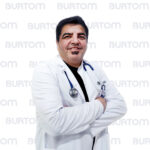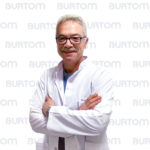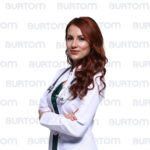Burtom ‣ Departments ‣ Emergency
Language: 🇬🇧 English | 🇹🇷 Türkçe

Emergency Department Overview

An emergency department (ED), often referred to as the ER, is a specialized medical facility within a hospital that is dedicated to providing immediate and critical care to patients facing a wide range of medical emergencies. This department operates around the clock, 24/7, to ensure rapid assessment, diagnosis, and treatment of individuals with acute medical conditions, injuries, or life-threatening situations.
Key Functions of an Emergency Department

Urgent Medical Care: The primary function of an emergency department is to provide timely and expert medical care to individuals with acute health issues. This can include severe injuries, sudden illnesses, and conditions that require immediate attention.
Triage: Upon arrival at the ED, patients are triaged, which means they are assessed to determine the severity of their condition. This helps healthcare professionals prioritize patients based on the urgency of their medical needs.
Diagnostic Services: The ED is equipped with advanced diagnostic equipment, such as X-ray machines, CT scanners, and laboratory facilities. These tools are crucial for quick and accurate diagnosis, enabling healthcare providers to determine the most appropriate treatment.
Treatment and Stabilization: Once a diagnosis is made, medical staff take immediate steps to stabilize the patient’s condition. This may involve administering medications, performing procedures, or providing life-saving interventions.
Specialized Care: Emergency departments have a wide range of specialized medical professionals on hand, including emergency physicians, trauma surgeons, nurses, and support staff. They are trained to handle various medical emergencies, from minor injuries to major trauma cases.
Coordination of Care: In many cases, patients may require further hospitalization or surgery. The ED team plays a vital role in coordinating the patient’s ongoing care and ensuring a smooth transition to other hospital departments or specialties.
Emergency Preparedness: EDs are well-prepared to respond to mass casualty events, natural disasters, and public health emergencies. They often have contingency plans in place to manage surges in patient volume during crisis situations.
Situations within the scope of emergency services

Heart Attack: A condition characterized by sudden chest pain, shortness of breath, and other symptoms.
Stroke: Occurs with sudden dizziness, difficulty speaking, and one side of the face drooping, among other symptoms.
Trauma: Injuries and fractures resulting from accidents, including internal bleeding and other severe injuries.
Respiratory Problems: Conditions such as severe asthma attacks, lung infections, or lung injuries leading to breathing difficulties.
Poisoning: Symptoms caused by exposure to chemicals, drugs, or toxic foods.
Diabetic Crisis: Emergencies related to diabetes, such as diabetic ketoacidosis or severe hypoglycemia.
Bleeding: Severe bleeding, signs of internal bleeding, or bleeding resulting from trauma.
High Fever: High fever and signs of infection.
Brain Hemorrhage: A condition characterized by sudden severe headaches, loss of consciousness, and other neurological symptoms.
Pneumonia: A lung infection with symptoms including difficulty breathing, high fever, and chest pain.
Post-Traumatic Stress Disorder: Requests for emergency assistance from individuals displaying symptoms of post-traumatic stress.
Allergic Reactions: Symptoms resulting from severe allergic reactions (anaphylaxis).
Foreign Body Ingestion: Difficulty breathing or swallowing due to the ingestion of foreign objects.
Psychiatric Emergencies: Psychiatric emergencies such as severe depression, bipolar disorder, suicidal thoughts, or severe anxiety attacks.
This list includes some common situations that fall within the purview of emergency departments. However, emergency departments can handle a wide range of medical emergencies, and each case may vary depending on the patient’s symptoms and severity.
Patient Experience in the Emergency Department

Visiting an emergency department can be a stressful experience for patients and their families. ED staff are trained to provide not only medical care but also emotional support, ensuring that patients feel as comfortable and reassured as possible during their stay.
Conclusion

Emergency departments are critical components of healthcare systems, serving as the frontline of medical care for individuals in urgent need. They are staffed by highly skilled professionals and equipped with state-of-the-art technology to deliver rapid and effective medical interventions, ultimately saving lives and promoting the health and well-being of the community.
For more detailed information or if you have specific questions about our emergency department services, please don’t hesitate to contact us. Your health and safety are our top priorities, and we are here to provide the highest quality of care in times of crisis.
Medical Devices Used in the Emergency Department

- Monitors: Used to monitor vital signs such as heart rate, blood pressure, oxygen levels, and other parameters.
- EKG (Electrocardiogram) Machines: Used to record and examine the heart’s rhythm.
- Defibrillators: Devices used in cases of sudden cardiac arrest or serious arrhythmias.
- Ventilators: Used to support the respiration of patients experiencing respiratory distress.
- Blood Gas Analyzers: Used to measure blood gases, assess acid-base balance, and determine oxygen levels.
- IV Pumps: Devices used to administer medications and fluids to patients intravenously.
- Ultrasound Machines: Used to perform quick ultrasound examinations.
- X-ray Machines: Used to take X-ray images for trauma or other emergencies.
- Computed Tomography (CT) and Magnetic Resonance Imaging (MRI) Machines: Used to obtain more detailed images of internal injuries.
- Blood Pressure Monitors: Used to continuously monitor patients’ blood pressure.
- Glucose Monitors: Used to measure blood sugar levels and monitor diabetes patients.
- Stethoscopes: Used by doctors and nurses to listen to patients’ heartbeats and lung sounds.
- Wound Care Supplies: Materials necessary for the treatment of cuts, burns, and other trauma-related wounds.
- Medication Injectors: Injectors used to administer emergency medications quickly.
Get a Free Second Opinion
Experienced Burtom Medical Team is Ready to Help

I consent to Burtom Health Group using my aforesaid personal data for the purposes described in this notice and understand that I can withdraw my consent at any time by sending a request to info@burtom.com.







